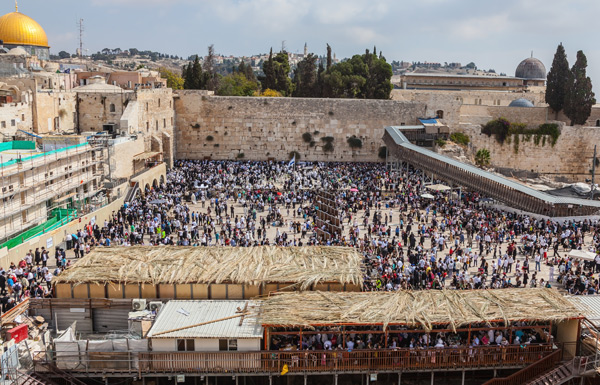
The Feast of Tabernacles: The Messiah as God in Residence
Israel's three Fall Festivals—Trumpets, Atonement and Tabernacles—are grouped together within a three-week window. They afford us an annual opportunity to see a three-dimensional portrait of our messiah, Jesus, as we peer through that window and see Him through Jewish eyes.
There are three key reasons for every believer, whether Jewish or Gentle, to study the Fall Feasts. First, study of these feasts illuminates and deepens our understanding of the New Testament. As Paul emphasizes in his letter to the Colossians (2:16-17), these Jewish holy days point us to our Messiah. The very essence of each festival is richly saturated through and through with Christ. Second, these holy days are very important to our God. In Leviticus 23, where the calendar of these festivals is formally presented to Israel, the holy days are specifically referred to as His appointed times (23:2). Third, these festivals serve as instruments to help focus our prayers for the Jewish people.
The week-long Feast of Tabernacles, or Sukkot (“booths”), falls five days after the Day of Atonement. The most somber time of the year is quickly contrasted with the most celebratory. Biblically, it was the third and final pilgrimage period (along with Passover and Pentecost) when Israel was commanded to assemble at the central location of worship, the Tabernacle (and later, the Temple). It was primarily established as an agricultural holiday, a period for ingathering of Israel's people and crops.
The essential element of this holiday is its namesake, the Sukkah. (“Sukkah” is the singular form of “Sukkot”). Sukkot are the temporary, flimsy, three-walled huts which are built in the backyard or courtyard of Jewish homes. Although the Biblical command is to live in these kiosks for seven days, most Jews today fulfill that command by eating at least one daily meal inside the sukkah. Some particularly observant Jews will sleep in them as well.
A messianic connection we derive from the Feast of Tabernacles is that the Messiah has come to dwell with His people. The initial chapter of John's gospel proclaims that "the Word became flesh and lived among us, and we have seen His glory" (John 1:14). The apostle portrays Jesus as "sukkah-ing" among us, emphasizing the Messiah as our uber-Sukkah, God's Super-Sukkah!
Furthermore, the conclusions of both the Old and New Testaments prominently stress the Feast of Tabernacles. The concluding chapter of the Old Testament’s next-to-last book, Zechariah, reveals just how crucial it will be for all nations to properly observe this holy day in the future Millennial Kingdom in the Messianic Age (Zech. 14:16-19). In the next-to-last chapter of the New Testament's final book, Revelation, John provides a gorgeous portrait of God’s great ingathering of His harvest, which are all those who believe, both Jews and Gentiles together. "Behold, the tabernacle of God is with men, and He will dwell with them, and they shall be His people” (Rev. 21:3). History, as we know it, will culminate with God Himself becoming our eternal Sukkah.